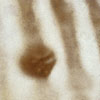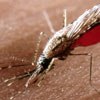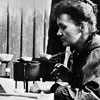 Text search Text search
 Related images Related images
 HistoryWorld HistoryWorld
 Link Link
 Map Map
Click the icons to visit linked content. Hover to see the search terms. |
|  |
| | | | | | | |
|
| 1895 |
| | | German physicist Wilhelm Roentgen discovers rays that can penetrate light-proof barriers, and names them x-rays because their nature is as yet unknown | |   
|  | Roentgen's X-ray of his wife's hand
Wellcome Library, London
|
|
|
| 1896 |
| | | French physicist Antoine Henri Becquerel discovers in uranium salt the phenomenon of natural radioactivity | |   
| |
|
| 1897 |
| | | English physicist Joseph John Thomson, working at the Cavendish laboratory in Cambridge, discovers the existence of the electron | |    
| |
|
| 1897 |
| | | British physician Ronald Ross identifies the Anopheles mosquito as the carrier of malaria | |    
|  | Anopheles mosquito
Wellcome Photo Library
|
|
|
| 1898 |
| | | British chemists William Ramsay and Morris Travers isolate the element c | |    
| |
|
| 1898 |
| | | British chemists William Ramsay and Morris Travers isolate the element neon | |    
| |
|
| 1898 |
| | | British chemists William Ramsay and Morris Travers isolate the element xenon | |    
| |
|
| 1898 |
| | | Marie Curie and her husband Pierre isolate a new element which they name polonium in honour of her native Poland | |    
| |
|
| 1898 |
| | | Marie and Pierre Curie isolate the element radium, working without any protection because unaware of the danger of radioactivity | |    
|  | Pierre and Marie Curie in their laboratory
Wellcome Library, London
|
|
|
| 1898 |
| | | H.G. Wells publishes his science-fiction novel The War of the Worlds, in which Martians arrive in a rocket to invade earth | |   
| |
|
| | | | | |
| |